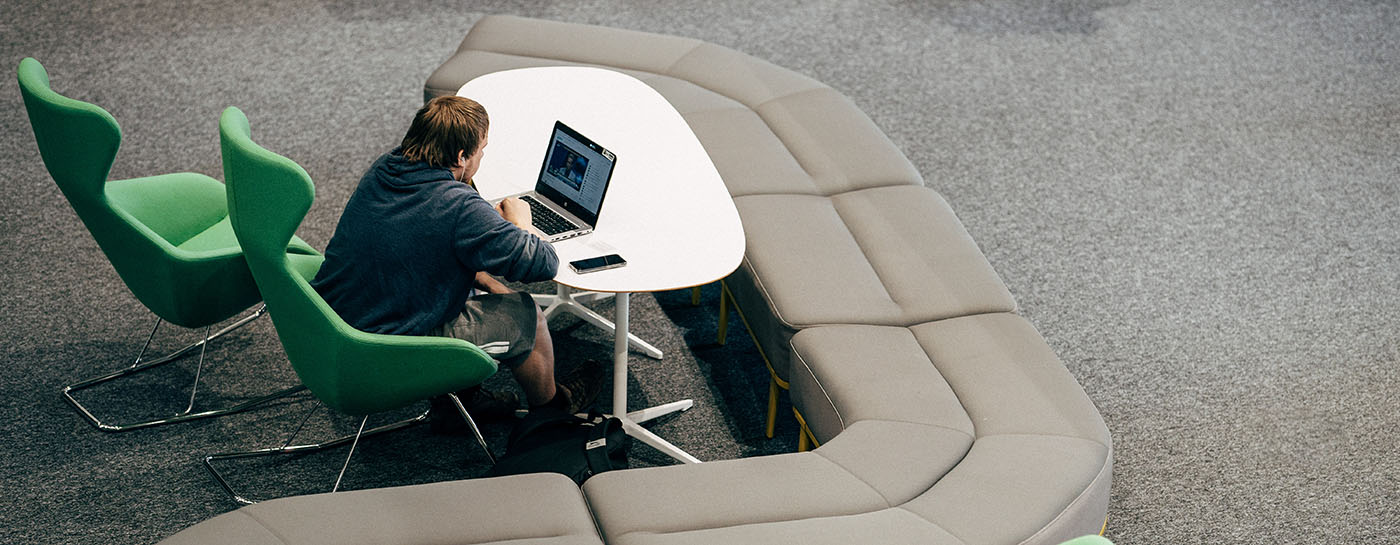In Conversation with Win Hughes, Senior Lecturer in Adult Nursing, Faculty of Health and Education Studies, UON
Date 21 March 2024
21.03.2024Sharing Distance Learning academic practice: In Conversation with...Win Hughes and David Meecham - key themes and teaching and learning advice from a converastion between UON Distance Learning module leaders.

On 4th March 2024, the CADE DL SIG leaders David Meecham (Education) and Jim Harris (LTE) met with Win Hughes (Adult Nursing) for an open discussion on Distance Learning (DL) to share perceptions, expectations, and practice in the delivery of DL programmes. The following notes provide themes, practical tips, and recommendations from the discussion.
In conversation with
Question:
How do I move my DL practice beyond PowerPoint and chat?
Institutional support
It was discussed that there was a lack of institution-wide coordination and support for DL provision and development for academic staff. This has contributed to a wide variety of DL approaches across the faculties, and even within programmes, where the digital experience provided is limited to the digital capabilities of the Module Leader. The NILE Design Standards were highlighted as these set out the minimum design expectations for NILE sites including those for DL modes of study, and the UON Standards and Guidelines for Distance Learning were discussed which have been produced with the aim of support academic staff in the development of the DL student digital experience.
An example of the variety of DL experience was shared from within the institution whereby a module was designed as an asynchronous self-study approach using narrated PowerPoints to deliver the content (similar to a digital correspondence course) compared to a more interactive synchronous delivery which provided students the opportunity to “Stop and ask questions at any time”.
Clarification was made that the Centre for Active Digital Education was limited to a research remit, and that it could influence institutional approaches to DL through the development of a Community of Practice to share experience of DL development and delivery.
Student engagement
The need for a balance between student skill development through application activities and digital content delivery was identified to ensure active engagement and application opportunities by students beyond reading/watching/listening to content.
Both David and Win expressed that the Level 7 students have demonstrated a willingness to engage in online collaboration and activities, which was discussed as potentially due to the mature nature of the student cohorts who have chosen a DL mode of study. With greater levels of independent study and enquiry being an expectation of level 7, students seemed to engage positively with the range of activities provided.
The importance of providing feedback responses in a digital format as a persistent resource was discussed, for example tutor comments added to a student populated Padlet, that students can refer back to at a later stage.
Formative task engagement and responses can be used to nudge students who have disconnected from their studies, providing the opportunity to encourage re-engagement with their studies.
For DL students’ Academic skill development, David has set up and uses a referencing quiz for level 7 students. It aims to question students about the use of referencing within academic work and to establish the academic level expected of them.
Avoiding tumbleweed moments where students don’t contribute during online sessions was discussed, and one area of practice was around students having their cameras on during these sessions. David shared a strategy whereby if the students don’t have their cameras on, the moderator states that they think it is a technical issue for the student, so asks them to leave and rejoin the session with the camera on. This generally resulted in other students switching their cameras on if they had previously had them off, therefore increasing the sense of engagement and participation.
Polling within Blackboard Collaborate could be used for quick questioning/feedback between the academic and the students, for example, after providing the guidance for activities within the breakout groups, setting a “Yes/No” poll and asking the students “Are there any questions before I move you into breakout groups” provides an opportunity for clarification or questions from the students to build confidence of the requirements of the task ahead. This can also be achieved by asking students to use the happy face option to confirm they understand and are ready to go to the rooms. Use of the “Detach panel” option in the context menu for the participant list allows for the Comments panel and Attendee list to be shown at the same time was identified as good practice when using this approach.
Collaborative learning spaces
When discussing collaborative working opportunities, options for providing and supporting breakout groups were shared, such as being clear that students could self-select into breakout rooms rather than assigned groups. This was a way to mitigate situations where a student felt they were the only person contributing and would prefer to work in a different group of students. Using the Pause breakout group option rather than close breakout rooms within Blackboard Collaborate provides students with persistent groups so that they can continue to collaborate with the expected same group of students when returned for further breakout rooms within the same Collaborate session.
Win has used a tea space in her Blackboard Collaborate sessions which is an informal lobby available 15 minutes before the formal online synchronous session start time for general chat to support a sense of student belonging between the cohort and the tutor.
Peer-to-peer learning through informal dialogue where students have ethically shared professional experience (mainly level 7 practitioners) supported students in developing a sense of being part of a professional community.
When pausing or ending a breakout session, provide a countdown in the main chat to warn people to be prepared to rejoin the main room by finishing up their conversations.
Technology and Pedagogy
The importance of being clear and honest with the cohort when academic staff are introducing and experimenting with digital technology in supporting the delivery of the module was discussed as part of setting the scene and expectations for engagement with the digital learning environment.
The potential use of H5P was discussed, however the range of activity types were deemed to be aimed at lower levels of academic study for basic knowledge checking, and therefore not appropriate for level 7 study.
Padlet was used for online work in groups for an Enquiry-Based Learning module and students engaged well with the activities.
Flipped classroom has worked well whereby students are required to read specific sources before the synchronous session which focuses on analysis of themes and discussions on application of principles from the sources. It was identified that this worked best when mixed with other approaches to the synchronous sessions as considerations for student workload needed to be recognised, as the reasons for choosing a DL study mode may have been around personal situations. Forewarning of synchronous activity sessions is needed to prepare the students, set expectations and to support them in identifying their availability. Students felt it was useful to have dedicated time to read the specified materials as part of the design of the weekly sessions.
PowerPoint has a function to share from OneDrive (not SharePoint) which allows the sharing of the presentation with students before it is delivered, aligned with Universal Design for Learning principles, and allow students to add comments or questions to the slides, which can then be addressed during the session. This has helped international students prepare for the session ahead of the delivery of the presentation.
Check whether external platforms such as Padlet have options to send notifications to the Padlet owner of any new contributions in order to act as a prompt to review the submission, rather than potentially missing contributions.
Caution was raised around introducing a wide range of collaborative technologies as this could cause technology-overload for the students and not building confidence in the digital competencies of a smaller range of technologies.
A demonstration of Miro was provided by David. Note that Miro is not currently supported by UON, therefore this was a technical demonstration of the functionality, rather than training and recommendation of its use.
Miro provides live updating of contributions without a Submit button (as in Padlet) which allows the tutor to view one document which is being updated by multiple groups who are editing a part of the Miro board, with the groups being in separate Blackboard Collaborate breakout rooms.
Each participant on a Miro board has a cursor and nametag that appears on screen. Use the cursor view setting to switch these off otherwise it could become overwhelming with 30 or more students.
Students did struggle with the interaction, so the suggestion was to introduce students to Miro by presenting content only during the initial sessions, and then to add in interactions gradually.
Miro boards can be based on PowerPoint slides, and a link to the board can then be shared on NILE. Students can then be asked to contribute to specific slides within the presentation.
Miro allows integration with Google Docs and allows anonymous accounts (no login required to contribute to the document) to update a Google Doc, which is then embedded as a document within a board.
Future plans
It was suggested that, in support of a DL Community of Practice, the CADE DL SIG arranged quarterly meetings of DL practitioners to meet and share views and question colleagues about their approaches. If you currently deliver modules by Distance Learning and would like to join the CADE DL SIG, please email jim.harris@northampton.ac.uk.
